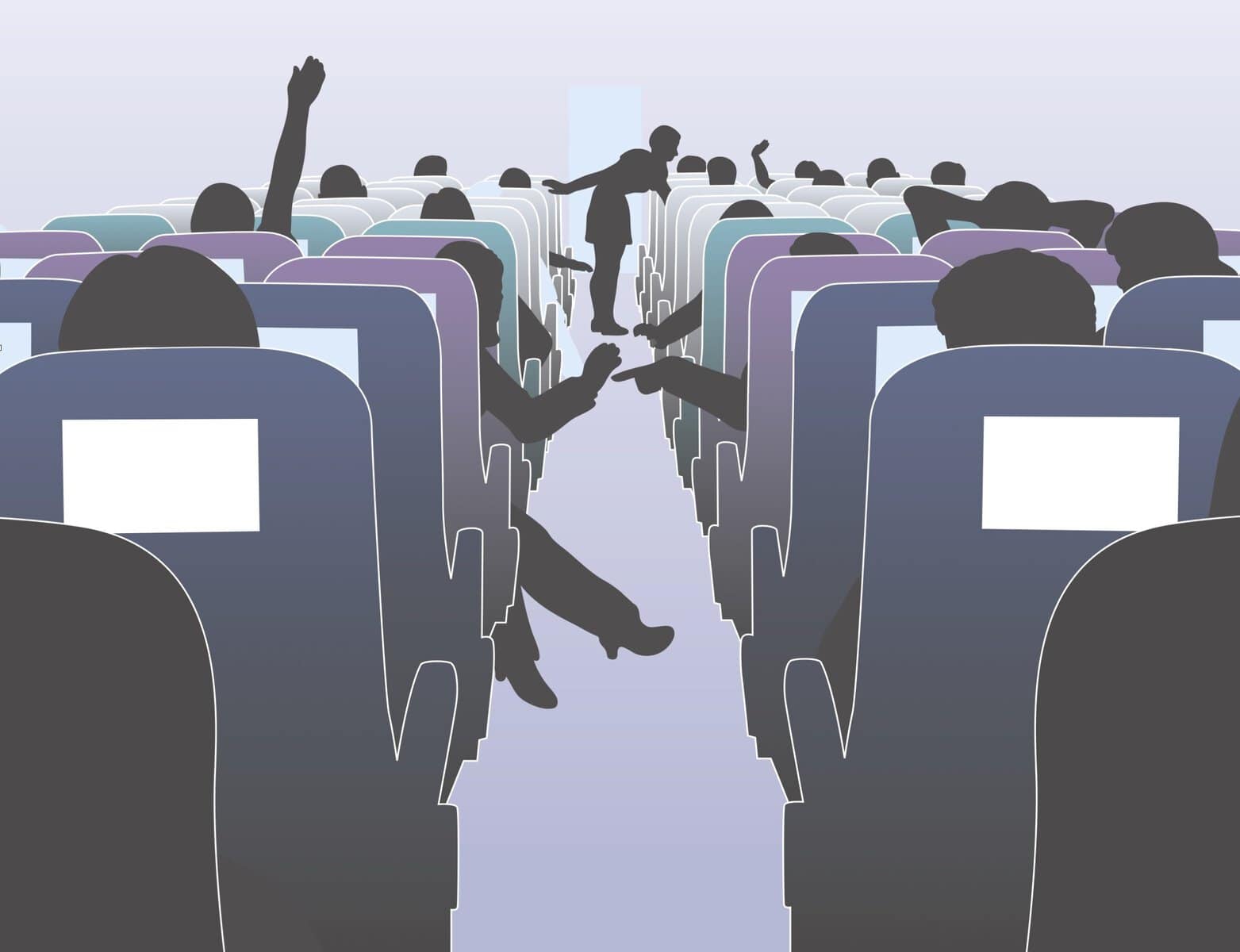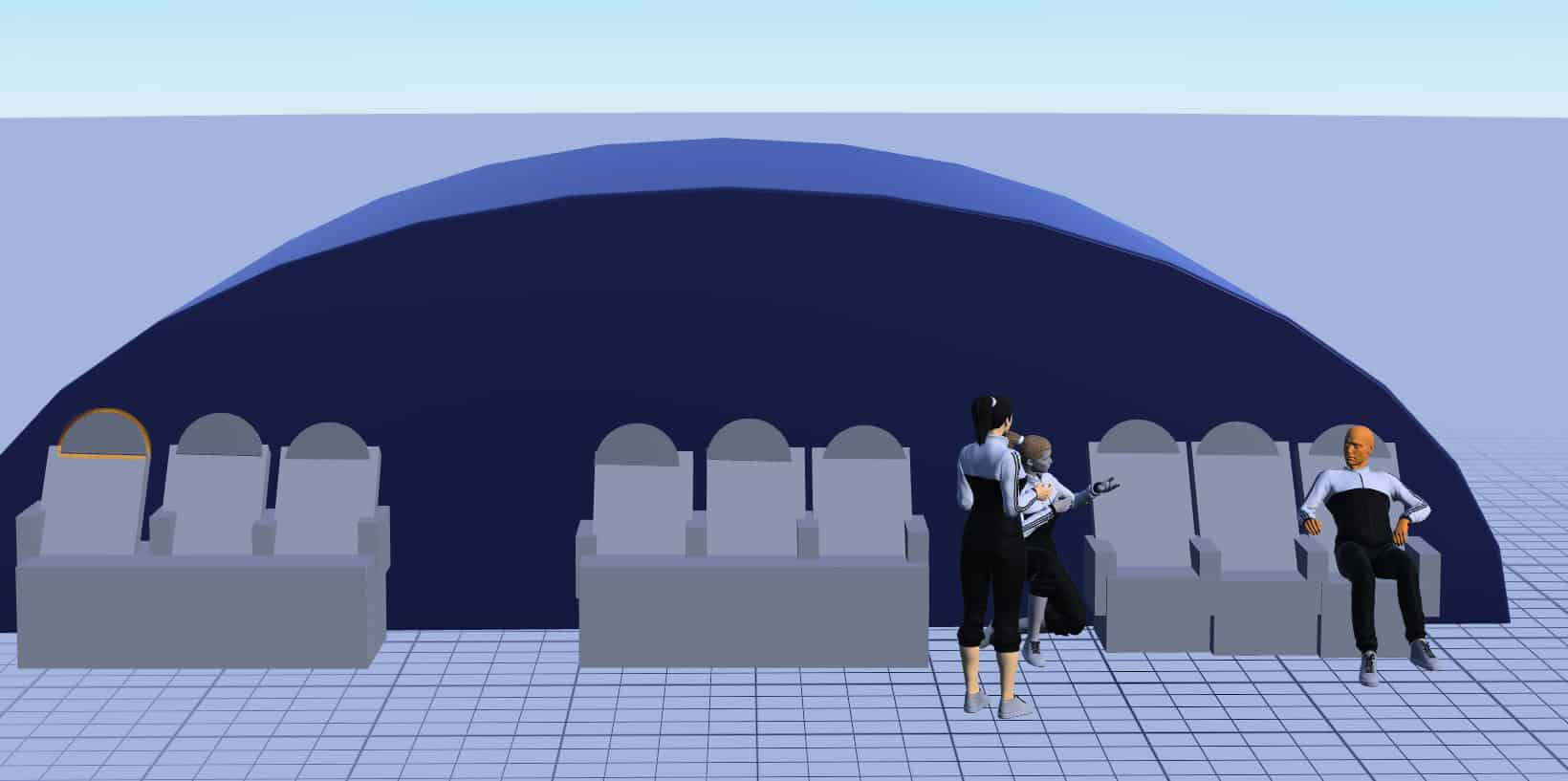
FlySafe: Cabin Crew Tactics for Managing Disruptive and Unruly Passengers

DisPax - The Unruly Passenger
As a cabin crew team, you’ve got a lot on your plate—from ensuring the safety of every passenger to maintaining a positive in-flight experience. But what happens when a passenger becomes disruptive? It can quickly escalate into a stressful, unsafe situation if not managed correctly. We’re here to help.
At Dynamis, we equip cabin crew members with the confidence, skills, and strategies to handle disruptive passengers calmly and professionally. Whether it’s a passenger refusing to follow instructions or an unruly traveler causing a scene, we’ve got cabin crew teams covered with real-world tactics designed to de-escalate and resolve conflicts before they spiral out of control. Our clients know that our focus is on bringing out-of-control moments into safe resolutions, verbally if possible and physically where necessary.
The Problem
Managing difficult passengers mid-flight can feel overwhelming. The cabin team are tasked with keeping everyone safe while navigating an unpredictable situation—often in the confines of a packed aircraft. We know how important it is to maintain control, project calm, and find resolutions that minimize disruptions for the entire flight.
The Solution
With nearly 20 years of experience in high-stakes training, conflict management, and working with organisations worldwide, we understand the complexities of conflict challenges. Our proven tactics are based on real-world scenarios and have helped thousands of teams like yours handle difficult passengers with relative ease.
Grab a coffee and speak to our training advisor.
With over 15 years of experience working with clients, we are confident that we can gain an understanding of your issues, resources, timeframes and budget quickly and soon propose a training plan which fits your needs.
How to Organize Training Painlessly!
A Clear Plan to Handle Any Situation
Step 1: Identify Early Signs
Spot the first signs of trouble—before the situation escalates. Using a reliable map of human behaviour to recognise deviations from baseline bevaiour, to identify the specific cause or driver of that behaviour and to become alert to a danger sign, early.
Step 2: Use Non-escalation Techniques
Learn how to use body language, tone, and verbal communication to prevent everyday encounters with passengers, about those difficult rules, procedures and safety advice, to help passengers understand and voluntarily collaborate with us.
Step 3: Apply Conflict De-Escalation Skills
Use planned and pre-practiced verbal skills to work a disruptive passenger through a pathway, leading them from resistance or crisis towards compliance and calm.
Step 4: Prioritise Safety
Having confidence and competence in a team-based approach which keeps everyone - crew, passengers and the disruptive person - safe in situations where physical confrontation is more likely.

What teams learn:
“Acts which may jeopardise the safety of the aircraft or of persons or property therein or which jeopardise good order and discipline on board.”
The Convention on Offences and Certain Other Acts Committed on Board Aircraft (Tokyo Convention 1963)
Aggressive and threatening behaviour has unfortunately become more common in our society. The problem of disruptive passengers is constantly increasing within the airline industry.
Although disruptive passengers represent only a minute proportion of our passengers as a whole, we must never forget that one aggressive passenger can jeopardise safety on board.
Disruptive passengers affect all personnel and passengers involved in the safe operation of a flight.
A majority of incidents involve verbal abuse, failure to follow crew instructions and other anti-social behaviour. Eleven percent include physical aggression toward passengers or crew or damage to the plane.
Alcohol or drugs are a factor in 23 percent of the cases. In the vast majority of incidents involving drugs or alcohol, the substances were consumed before boarding or imbibed secretly on board.
ICAO has defined a four tier threat level hierarchy. They provide valuable guidance to operators in determining the seriousness of an unruly passenger incident and in developing their policies on appropriate level of response. The ICAO level of threat specifics are as follows:
Level 1 — Disruptive behaviour (verbal);
Level 2 — Physically abusive behaviour;
Level 3 — Life-threatening behaviour (or display of a weapon);
Level 4 — Attempted or actual breach of the flight crew compartment.
Physical Safety
Your staff will perform at their best in conflict situations - maintaining their professionalism, customer-focus and creativity - if they trust that their physical safety is intact. By teaching a small number of easy-to-learn and highly-retainable verbal and physical tactics, we enable your team.
Organisational Safety
In our 24-hour rolling-news and social-media society, protecting your airline’s reputation for safety and comfort is a challenge. We will enhance your staff team’s verbalisation skills, procedures and situational awareness to match both operational and reputational goals.
Legal Safety
With a firm understanding of the legal basis for protective action (the Tokyo Protocol and others) your team will use a decision-making framework which protects them as individuals, within the operational context of your airline’s policy and wider legislation.
Emotional Safety
Our training strengthens the self-confidence and the demeanor of your cabin crew in regard to the security function of their role. Because the training is practice- and performance- based, true ‘confidence in conflict’ emerges.
Grab a coffee and speak to our training advisor.
With over 15 years of experience working with clients, we are confident that we can gain an understanding of your issues, resources, timeframes and budget quickly and soon propose a training plan which fits your needs.
How to Organize Training Painlessly!
Course Goal:
The aim of this course is to enable Airport and Cabin Crew staff with the knowledge and skills to manage difficult, disruptive or dangerous behaviour from passengers.
Course Objectives
- Understand the definition of a “Disruptive Passenger”.
- Understand the different types of passenger behaviour (ICAO Levels) and Kaplan/Wheeler Curve
- Cabin crew behaviours to minimise conflict, non-escalation, de-escalation and Crisis/Emotionally Disturbed Person strategies.
- Understand the Tokyo Convention 1963 and other international agreements relating to dealing with disruptive passengers, and the powers they give staff to intervene and possibly use physical restraint and restraint equipment to manage conflict situations.
- Understand the procedures and protocols for dealing with disruptive passengers in different situations such as: At the Airport, Boarding, Taxiing, In Flight and Destination Arrival.
- Practice and understand a small number of rapidly learned and easily-retained physical skills to subdue, control and restrain a disruptive passenger
- Minimising as far as reasonably possible the risk of injury to a restrained subject, to staff and to other passengers.
- Understand the importance of reporting incidents, and demonstrate how to correctly complete airline incident report forms.
“Be Alert and Decisive. Respond, Don’t React. Have a Pre-planned and Practiced response in-mind”
Individual Course Topics include:
Proxemics
Non-Escalation
Warning & Danger Signs
De-escalation
When Words Alone Fail
Law & the Violent Individual
Tokyo Convention & Powers of the Commander
Teamwork
Instinctive Protection
Control Phase Responses
Restraint Phase Responses
Restraint Device Use
Standing/Seated/Floor
Asphyxia/Sudden Death
Aftercare
Review and Report
Bystander Mobilisation
start today
Feedback from Learners About Our Training
Thousands of learners with Dynamis Since 2006
Course Met or Exceeded Expectations
Trainer Was Very Good or Excellent
Training was Relevant and Appropriate
Training for Disruptive Passengers
Dynamis training focusses on scenario-replication whenever time, suitable training environments and the requirements of our client allow it.
Our Disruptive Passenger training focusses on a number of common scenarios where a passenger:
Behaviours Encountered
- is drunk or under the influence of drugs.
- has not obeyed the instructions of ground staff or a member of the crew of the aircraft relating to safety or security.
- has used threatening, abusive or insulting words towards ground staff, another passenger or a member of the crew of the aircraft.
- has behaved in a threatening, abusive, insulting or disorderly way towards a member of ground staff or a member of the crew of the aircraft.
- has deliberately interfered with the performance by a member of the crew of the aircraft of their duties.
- has put the safety of either the aircraft or any person in it in danger.
- or if the mental or physical state or health of the passenger is a danger or risk to themselves, the aircraft or any person in it.
Training
Our training process involves:
- Building context for our learners by using narratives (often real news stories)
- Leveraging staff knowledge and experience to generate resolution strategies
- Overlaying decades-refined communication strategies for Non-escalation and De-Escalation
- Exploring a small number of highly reliable, naturally-occurring physical responses to violence to create personal safety
- Refining easily-retained team-tactics to create efficient ways to subdue and control a subject
- Utilising the most appropriate restraint devices, where necessary, to secure the subject and the flight.


